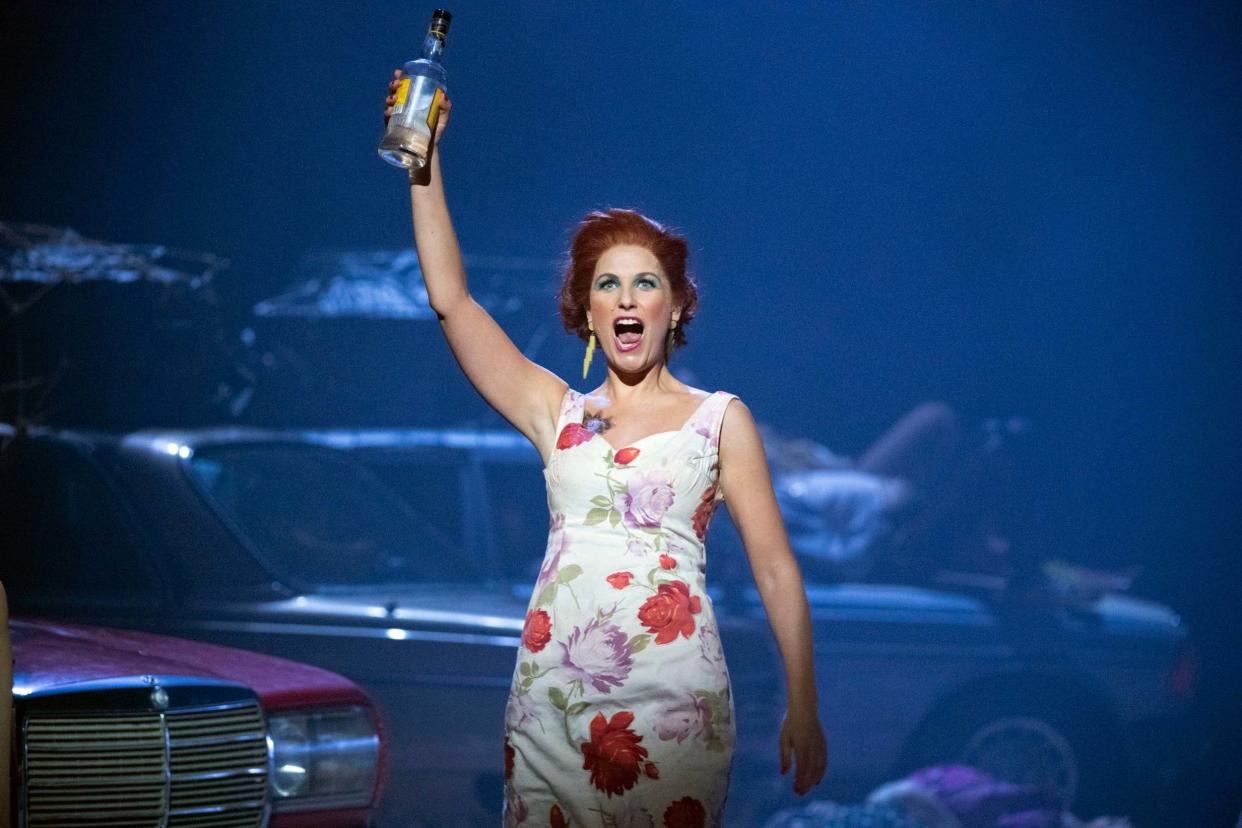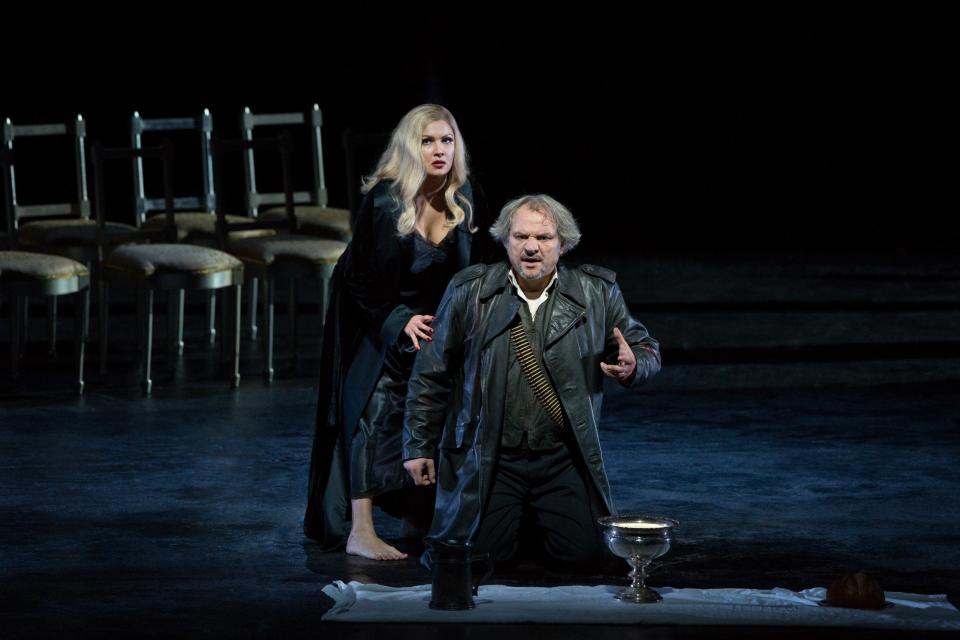Digital divas: Eight tips for getting into opera at home

We’ve all seen how Italians respond to Covid-19: they sing opera from their balconies. This is no surprise in Italy, where opera came into being at the end of the 16th century. Italian composers still dominate the core repertoire: Puccini and Verdi, Donizetti and Bellini, Mascagni and Leoncavallo — even the names exude musicality.
And yet today, many wouldn’t consider it for them. Now however, with theatres all over the world closed, opera companies small and large are streaming their work, often for free, making it available to people who might otherwise never consider live performances. How many of us would travel to Munich to see Donizetti’s Lucia di Lammermoor, or to Brussels for Wagner’s Tristan und Isolde?
Now, we can see them in the locked-down comfort of our living rooms. Here are eight things you need to know to get into opera right now.
Do the research
Opera is like mumblecore films; you have to get used to the fact that you won’t be able to make out most of the words — especially, as is often the case, if they’re sung in the original language. Most opera companies now provide the text (either the original English, or an English translation), above the stage in live performance, or as subtitles in video. But you don’t need to understand every single syllable: opera works in broad strokes. Read a plot summary beforehand (the briefer it is the better) to get a sense of the narrative trajectory; then let the music carry you through.
Tenors and sopranos good, baritones and mezzos bad

There are dozens of exceptions, but the voice types that are available to composers often match character types. Tenors will likely be the dashing hero, their ringing high notes an expression of tumescent masculinity: Cavaradossi in Puccini’s Tosca, for example. The soprano will long for his fond embrace; sometimes, she’ll get her man, sometimes — like Tosca — she’ll die in the attempt. Baritones? The archetype is Scarpia, again in Tosca, a malevolent and sadistic sexual schemer. As for mezzo-sopranos, their speciality is often described as “witches, bitches, and britches” — “britches” for when the mezzo plays a man, usually in baroque opera.
Prima la musica
It’s a debate as old as opera itself: which matters more, the words or the music? Usually music gets the vote. An opera with dull music (however you define it) won’t hold our attention for long, but beautiful music (however defined) may carry us through a dull text. Of course, the ideal is that music and text work in perfect harmony, but too often, especially in contemporary operas, the words get in the way, often because the librettist is trying too hard to be poetic, or to write as if the words will be spoken. That’s not how it works.
Mozart does it best
From the very beginning, composers divided their operas’ sung text into two types: what you might call the conversational, which carries the drama forward (usually called recitative); and the big vocal showpieces — solo arias, duets, quartets, sextets, all the way up to mighty choruses. The challenge is to knit the two together. No one managed that better than Mozart, especially in the three comic operas (The Marriage of Figaro, Don Giovanni and Così fan tutte) that he wrote to texts by Lorenzo da Ponte. Here, complex drama unfolds at breakneck speed, knock-about comedy bumping up against moments of heavenly beauty with barely a pause for breath.
Brush up your Shakespeare

Shakespeare’s career was at its height just as opera was being born, and the two have got on well ever since. There are at least 400 operas based on Shakespeare, in many languages, but few do the playwright justice. Verdi’s Macbeth is a personal favourite, not because Verdi slavishly followed the plot (although he told the story pretty straight), but because he worked it into full-blown Romantic opera entirely on his own terms. Not all Bardic operas are so successful: when Rossini’s version of Othello premiered in Rome in 1820, papal censors insisted on a happy ending.
History is bunk
Like Shakespeare, opera treats history not as a set of verified facts but as a source of towering characters, convoluted situations and mighty confrontations. There’s no use pointing out that Elizabeth I and Mary, Queen of Scots never met. In Donizetti’s Maria Stuarda, they do, and it makes for one of the most almighty rows in drama, in decidedly unregal language. Catholic Mary goes so far as to call Protestant Elizabeth a “vile bastard”. Forget the history books, enjoy the musical makeovers for what they are: blatant but bold reimaginings.
She must die

Catherine Clément’s feminist polemic Opera, or The Undoing of Women, argued that opera embodied women’s submission to male desire; in essence, they had to die for love. True, there are dozens of women killed off in opera: Lucia di Lammermoor, Carmen, Tosca, the list goes on and on. Clément saw them as victims of patriarchy, but she paid little attention to the music that the (invariably male) composers gave their doomed heroines. Lucia’s elaborate coloratura, Carmen’s confrontational vocal swagger, Tosca’s confessional “I have lived for art”: all these give the character a degree of self-determination that the plot alone may not allow.
Wagner: monster or maestro?
No figure in music history divides opinion as starkly as Richard Wagner. For some, his idea of the Gesamtkunstwerk (roughly, “total work of art”) showed the way forward, and not just for opera; for others, it marked the end of opera as a genuinely popular art form. Many regard his anti-Semitism as no more than a prejudice widely shared at the time; yet others see it as a baleful influence embedded within the very fabric of his work. It’s just about possible to enjoy his music without getting mired in the debates, but with Wagner, it’s never just about the opera.
Where to see it for free
Royal Opera House, London
A programme of free online content via Marquee TV. Next up is Così fan tutte on April 10.
marquee.tv/series/royaloperahouse
Met Opera, New York
Nightly free streams of past productions. Tonight it’s Puccini’s La Fanciulla del West starring Deborah Voigt.
Bavarian State Opera, Munich
Past productions and concerts free on demand for limited periods. Lucia di Lammermoor is available until April 8.
Deutsche Oper, Berlin
Past productions free on demand for limited periods. Tonight and tomorrow: Die Heimliche Ehe by Domenico Cimarosa.
Opera North
Several productions and performances available on demand, including The Ring Cycle, The Turn of the Screw and The Lullaby Project.
La Fenice, Venice
Full productions and performances by the orchestra’s musicians available for free on the opera house’s own YouTube channel.

 Yahoo News
Yahoo News 
